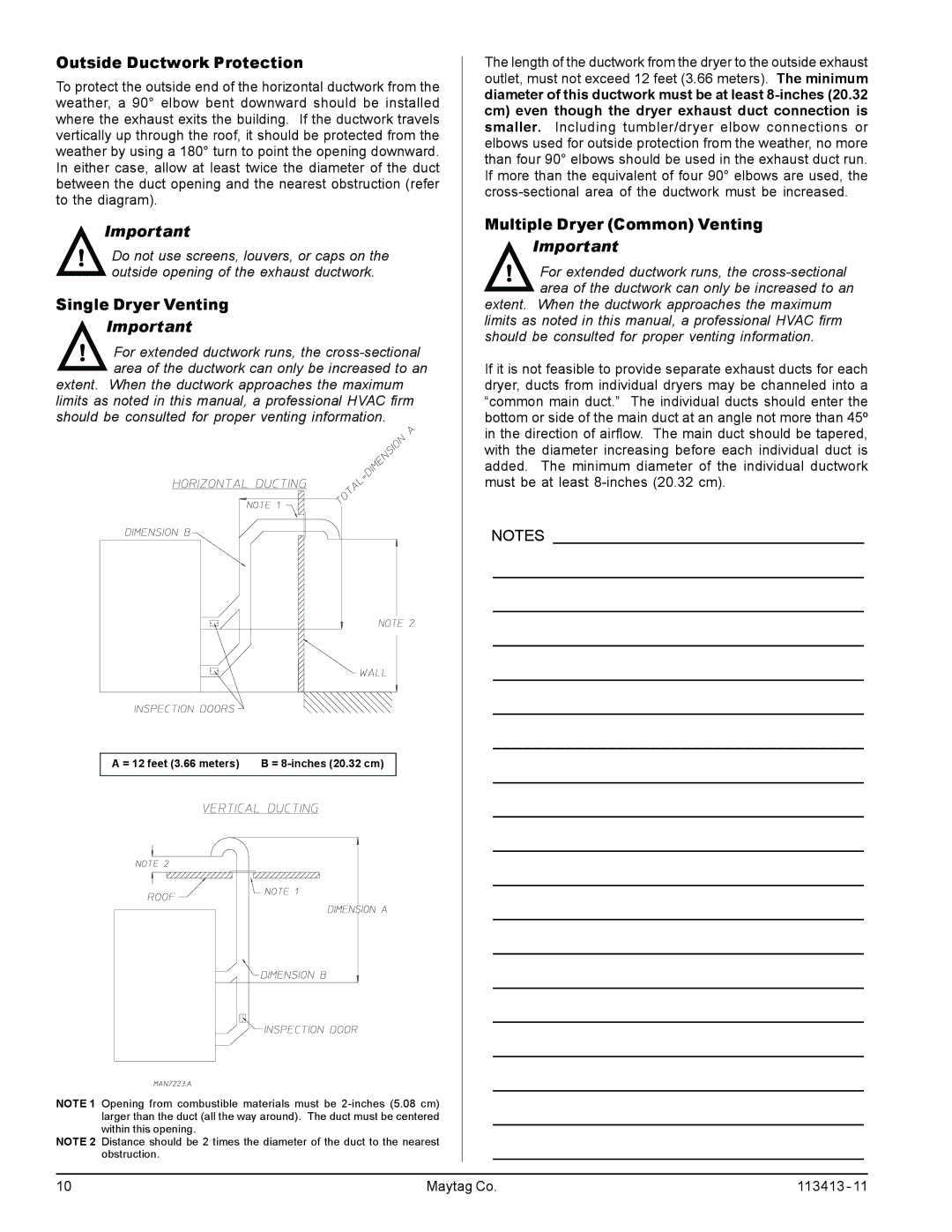
Outside Ductwork Protection
To protect the outside end of the horizontal ductwork from the weather, a 90° elbow bent downward should be installed where the exhaust exits the building. If the ductwork travels vertically up through the roof, it should be protected from the weather by using a 180° turn to point the opening downward. In either case, allow at least twice the diameter of the duct between the duct opening and the nearest obstruction (refer to the diagram).
Important
!Do not use screens, louvers, or caps on the outside opening of the exhaust ductwork.
Single Dryer Venting
Important
!For extended ductwork runs, the
extent. When the ductwork approaches the maximum limits as noted in this manual, a professional HVAC firm should be consulted for proper venting information.
A = 12 feet (3.66 meters) | B = |
|
|
NOTE 1 Opening from combustible materials must be
NOTE 2 Distance should be 2 times the diameter of the duct to the nearest obstruction.
The length of the ductwork from the dryer to the outside exhaust outlet, must not exceed 12 feet (3.66 meters). The minimum diameter of this ductwork must be at least
Multiple Dryer (Common) Venting
Important
!For extended ductwork runs, the
extent. When the ductwork approaches the maximum limits as noted in this manual, a professional HVAC firm should be consulted for proper venting information.
If it is not feasible to provide separate exhaust ducts for each dryer, ducts from individual dryers may be channeled into a “common main duct.” The individual ducts should enter the bottom or side of the main duct at an angle not more than 45º in the direction of airflow. The main duct should be tapered, with the diameter increasing before each individual duct is added. The minimum diameter of the individual ductwork must be at least
NOTES ____________________________________
___________________________________________
___________________________________________
___________________________________________
___________________________________________
___________________________________________
___________________________________________
___________________________________________
___________________________________________
___________________________________________
___________________________________________
___________________________________________
___________________________________________
___________________________________________
___________________________________________
___________________________________________
___________________________________________
___________________________________________
___________________________________________
10 | Maytag Co. | 113413 - 11 |
